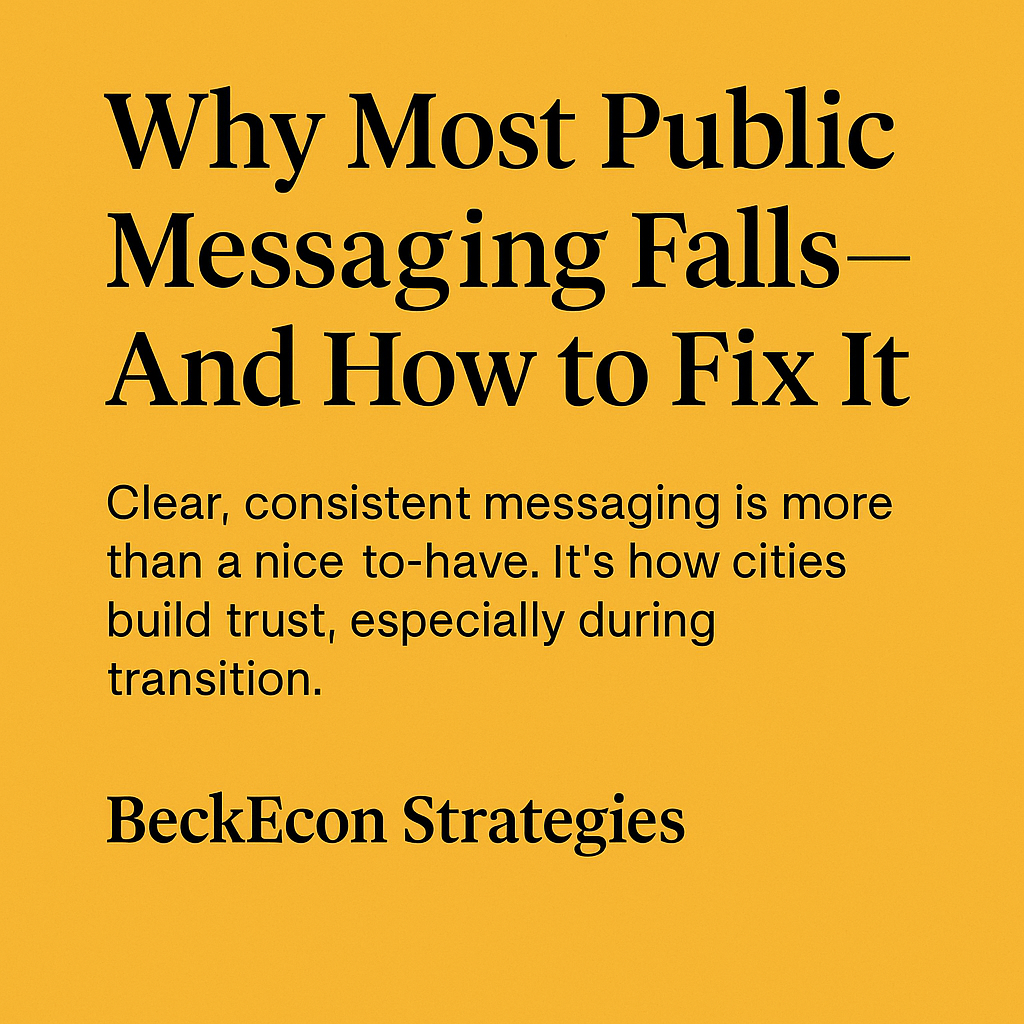Clear, consistent messaging is more than a nice-to-have. It’s how cities build trust, especially during transition.
When a city updates its zoning, hires a new chief, or launches a long-term plan, it’s easy to focus on logistics. But what gets overlooked? The message.
Without a clear message, public trust erodes. Confusion creeps in. And even good leadership gets overshadowed by a bad communication gap.
In my work with economic messaging and strategic communication, I’ve seen three common breakdowns—and they’re all fixable.
1. No One Is Translating the Data
Most cities have strong economic or programmatic numbers. But they rarely have messaging that explains what those numbers mean in real life—for residents, businesses, or local media.
Data without context is just noise. Messaging is what turns it into signal.
2. Transitions Trigger Silence or Spin
Leadership changes are an opportunity to reassure the public—but many cities default to generic updates or go quiet altogether. That’s when public skepticism spikes.
A simple message like “steady leadership, smart growth, and open communication” can make a bigger impact than a 12-page update.
3. Public-Facing Messaging Starts Too Late
Many organizations don’t think about messaging until a crisis forces them to. By then, they’re in reaction mode.
A one-page strategic brief—with talking points, tone cues, and public data—is often enough to change the narrative from reactive to proactive.
What This Means
Strategic messaging isn’t just about communications. It’s about governance. It’s how cities show transparency, direction, and accountability.
At BeckEcon Strategies, I help public organizations build clarity into the way they communicate economic context—before it becomes a pressure point.

